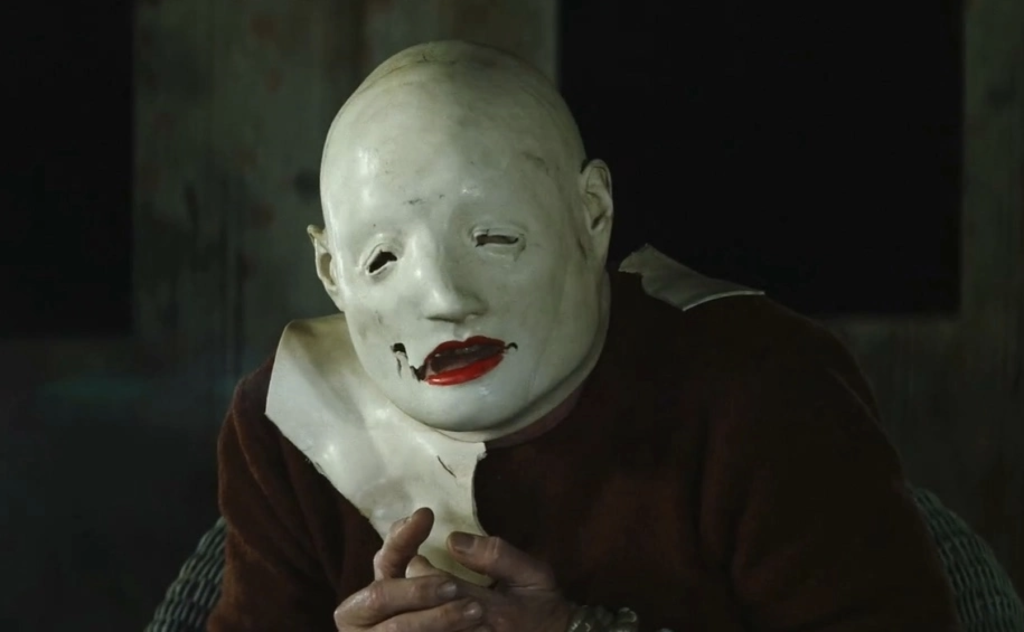
Broadcast Signal Intrusion: The Search for “Truth”
There’s a junction in any good conspiracy thriller where the viewer realizes, usually in tandem with the protagonist, that they’re in over their head. You’re both invested to the point where you simply can’t stop the search for the truth (however precarious the notion of “truth” may be) and have no choice but to see things through to the end, no matter how dark or fatal that end may be.
When a sense of closure overrides all else, it’s easy to see how one can detach so willingly from a sense of conventional reality. If you can no longer see things objectively, does the truth of “closure” even matter?
Broadcast Signal Intrusion has a jarring first act, introducing us to video archivist James (Harry Shum Jr.), who spends his lonely nights transferring old VHS over to DVD. Set in 1999, it casts the uncertainty of Y2K over the proceedings, which only intensifies when James catches a macabre “skit” interrupting a nightly news program.
Haunted by the disappearance of his wife three years prior, James becomes fascinated by the titular phenomenon, and quickly rabbit-trails into a quest to find their source, which may in turn explain his wife’s whereabouts (or not).
Defying Trends and Tropes
Broadcast Signal Intrusion is a strange film, especially when compared to the current genre trends and tropes. Character introductions are perfunctory, rendering details of James’ personality and history vague. But as the conspiracy unfolds, we get to know more of him through the circumstances. The visuals swap aged-down aesthetics for ultra-slick compositions rich with detail (knickknacks on the shelves of a basement room, for example), and Ben Lovett’s score reverts to the days of orchestral majesty…until the jazz horns give way to ominous ambient soundscapes.
It’s a testament to Broadcast Signal Intrusion’s freshness that the influence of its forebears doesn’t overwhelm the creativity of the story. While much of the horror comes from the depth of James’ self-implication as he follows one lead after another, the signals themselves are rife with nightmarish imagery of people in grotesque masks accompanied by harshly distorted sound. By making these interruptions brief, we develop a synchronicity with our protagonist, who becomes haunted by the blank-faced, dead-eyed perpetrators.
The Parallax Connection
Last year, I watched Alan J. Pakula’s The Parallax View for the first time. In it, Warren Beatty plays a roguish freelance reporter who gets tangled within a deep, dark political conspiracy with potentially global implications. The film begins with an amazingly vertiginous confrontation atop the Seattle Space Needle, which sets the tone for what’s to come: it’s a long drop to the bottom, and it won’t end well. Which begs the question: is the curiosity worth it?
And there’s the rub: both Parallax and Broadcast Signal Intrusion present the seduction of human curiosity as the most enticing drug of all. Each film has its own aesthetic and narrative strategies when it comes to their endings, and I admire the confidence of their respective executions.
Patient Filmmaking
The performances in Broadcast Signal Intrusion are excellent: Shum Jr. begins as an enigma who reveals more layers of self in tandem with the conspiracy; Kelley Mack is great as his unlikely ally. The supporting cast is buffered by fascinating turns from Chris Sullivan, Justin Wellborn, and Michael B. Woods as characters who’ve touched the mystery in some manner.
Another admirable aspect that lends the brief shocks even greater impact is the patience of the filmmaking. From James’ first encounter with Dr. Stuart Lithgow (Steve Pringle), Jacob Gentry’s directorial approach is clear: he wants us to listen to what the characters have to say and allow them the time to say it. As a result, we feel invested in James’ quest before we ever get to truly know him as a character.
Broadcast Signal Intrusion is refreshingly deliberate – confident in pacing, plotting, and performance. It draws you in from the first few minutes and doesn’t let go until long after the credits finish rolling.
4 out of 5 stars
The Plot Sickens: Find out what Jonny Numb thinks of the Black Christmas Universe!
Crash Analysis Support Team

Jonny Numb
Jonny Numb (aka Jonathan Weidler) is only unstoppable when it comes to word count. He co-hosts The Last Knock horror podcast with Billy Crash, and his writing can also be found at The Screening Space.
THE LAST KNOCK horror podcast is a Crash Palace Productions’ featured show. Besides this site, you can find THE LAST KNOCK on iTunes and Spotify and more, with new shows posted every other Sunday at 9 PM ET.
Crash Palace Productions website design and creation from Brian Yount Digital Enterprises with banner and THE LAST KNOCK art from Palko Designs. Logo designs from Paul Belci.
(Broadcast Signal Intrusion movie still from Queensbury Pictures.)
